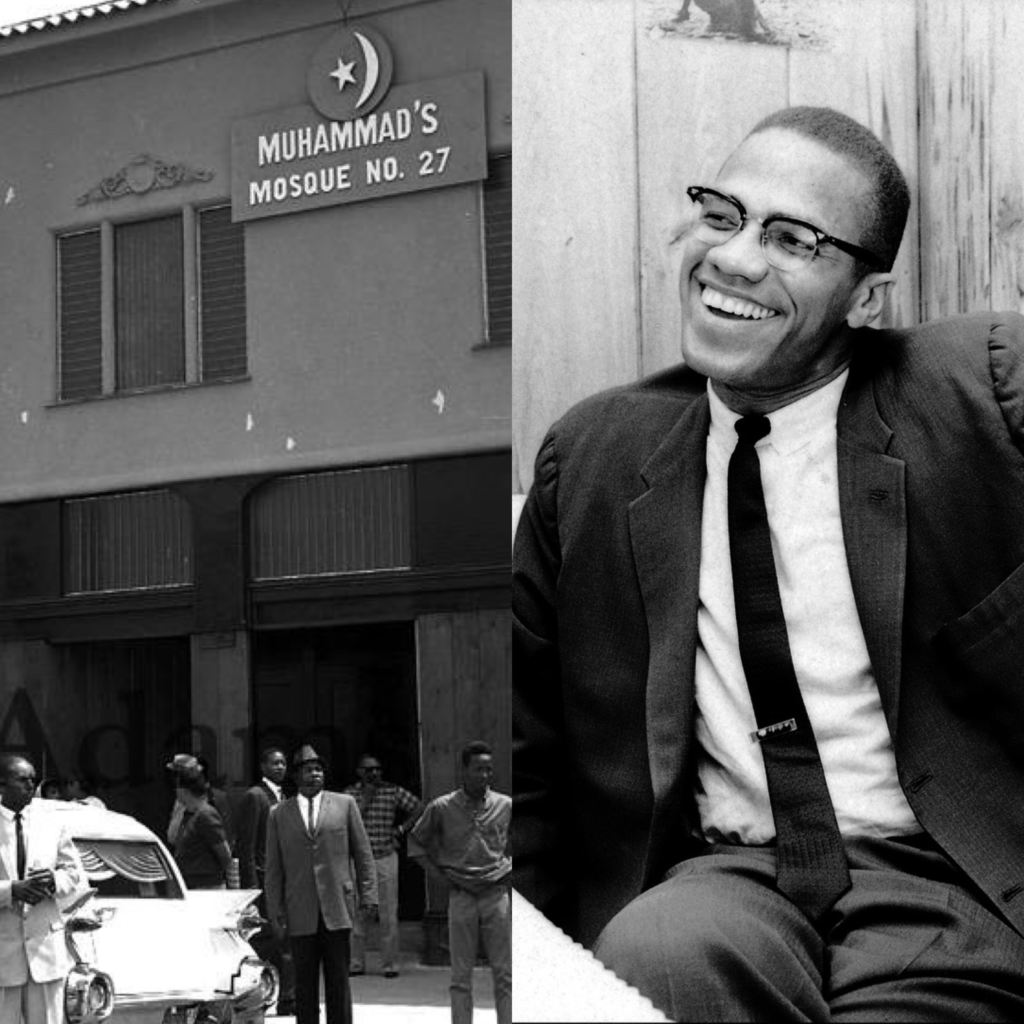Malcolm X Establishes Temple No. 27 in South Central, Los Angeles, in 1957
Los Angeles, CA—On what would have been his 98th birthday, influential city leaders, community members, and activists gathered in Leimert Park for the co-naming of Crenshaw Boulevard as the historic “Malcolm X Route.” This was a significant move on behalf of city leaders to make this possible, after a continuous push by local residents for [...] The post Malcolm X Establishes Temple No. 27 in South Central, Los Angeles, in 1957 appeared first on Slauson Girl.


Los Angeles, CA—On what would have been his 98th birthday, influential city leaders, community members, and activists gathered in Leimert Park for the co-naming of Crenshaw Boulevard as the historic “Malcolm X Route.” This was a significant move on behalf of city leaders to make this possible, after a continuous push by local residents for many years.
A little known fact, is that in 1957, Malcolm X visited Los Angeles where he played a pivotal role in establishing Temple No. 27on 56th and Broadway. Coincidentally, this location was just a few blocks away from the very neighborhood where I would later grow up at my grandmother’s home during the 1990’s in South Central.

Outside Muhammad’s Mosque #27, Los Angeles, 1962 (Harry Adams)
Malcolm X’s visit to Los Angeles was part of his efforts to expand the influence and presence of the Nation of Islam, a religious and social movement to empower African-Americans. The Nation of Islam advocated for self-reliance, economic independence, and the rejection of white supremacy.
Malcolm X established Temple No. 27 while engaging with the local community and spreading the message of Black pride, self-determination, and social justice. The specific reasons for choosing this area of Los Angeles as a location for the Temple may have been influenced by the demographics, which had a large African-American population and a history of cultural and political activism.

Malcolm X’s visit to what would later become the inner city of South Central, Los Angeles was part of his broader mission to mobilize and empower African Americans across the United States. By establishing a mosque in the heart of the community, he aimed to provide a space for spiritual and social support, fostering unity and resilience among local residents.
On April 27, 1962, an altercation broke out at the Mosque between members of the Nation of Islam and the Los Angeles Police Department, who claimed they were responding to reports of a disturbance. The LAPD wounded seven NOI members, leaving William Rogers paralyzed. Ronald Stokes, a member of the Nation of Islam and a close associate of Malcolm X was killed by police trying to break up the altercation.

The incident sparked outrage and heightened tensions within the Los Angeles African-American community. Malcolm X, who was not present at the scene but was a prominent leader within the Nation of Islam, publicly criticized LAPD for the shooting and accused them of excessive force and racial bias.

Malcolm X and pallbearers carrying the casket of Ronald Stokes, Los Angeles, May 5, 1962 (Harry Adams)
At the service, Malcolm X delivered a eulogy viewed by many as the turning point in his views toward political action and the civil rights movement. The incident and Malcolm X’s response, played a significant role in shaping the public perception of law enforcement and the struggles faced by Black individuals in Los Angeles.
The events surrounding Ronald Stokes’ death and the subsequent 1965 Watts Riots, highlighted the the urgent need for social justice and equitable treatment of African Americans in Los Angeles. The Watts Riots spurred urgent discussions on the necessity for comprehensive social and economic reforms, as well as the importance of fostering improved community-police relations and investing more resources in marginalized neighborhoods.

Malcolm X sitting with Dolores Stokes in a court room, Los Angeles, 1963 (Harry Adams)

Despite these discussions, the lack of substantial change and progress ultimately laid the groundwork for the 1992 riots, exposing the deep-seated frustrations and unaddressed grievances of the Black community.

In 2003, Malcolm X’s daughter Attallah Shabazz watched from the audience as the Los Angeles City Council voted unanimously to name an intersection in South Central Malcolm X Way, which is located at Central Avenue and Martin Luther King. Jr. Boulevard near the Bilal Islamic Center.
Renaming a street after Malcolm X is undoubtedly a powerful symbolic gesture.
READ MORE: LEARN ABOUT MASJID BILAL ISLAMIC CENTER
Malcolm X was a proponent of substantive change, urging Black communities to take control of their destiny. Symbolism alone cannot address the systemic issues that continue to plague the most marginalized Black people in Los Angeles.
As someone who has experienced the profound trauma, discrimination, and state-sanctioned violence in this city, it is disheartening to witness Los Angeles City leaders vote to change various intersections in honor of Malcolm X while the ongoing displacement of Black residents continues. Our specific needs have been overlooked, and it is time for our civic leaders to show boldness and address the issues we face.
The post Malcolm X Establishes Temple No. 27 in South Central, Los Angeles, in 1957 appeared first on Slauson Girl.







